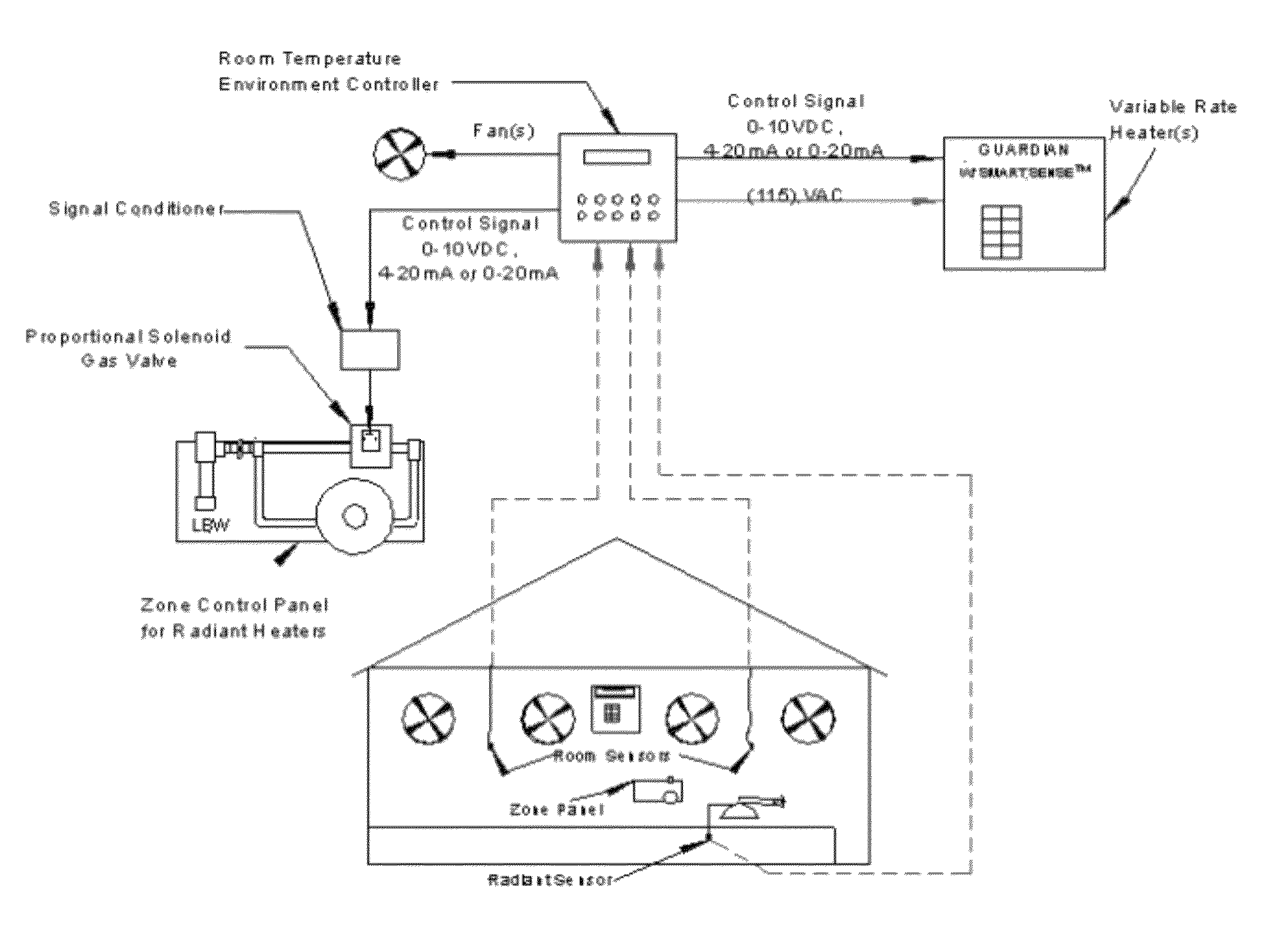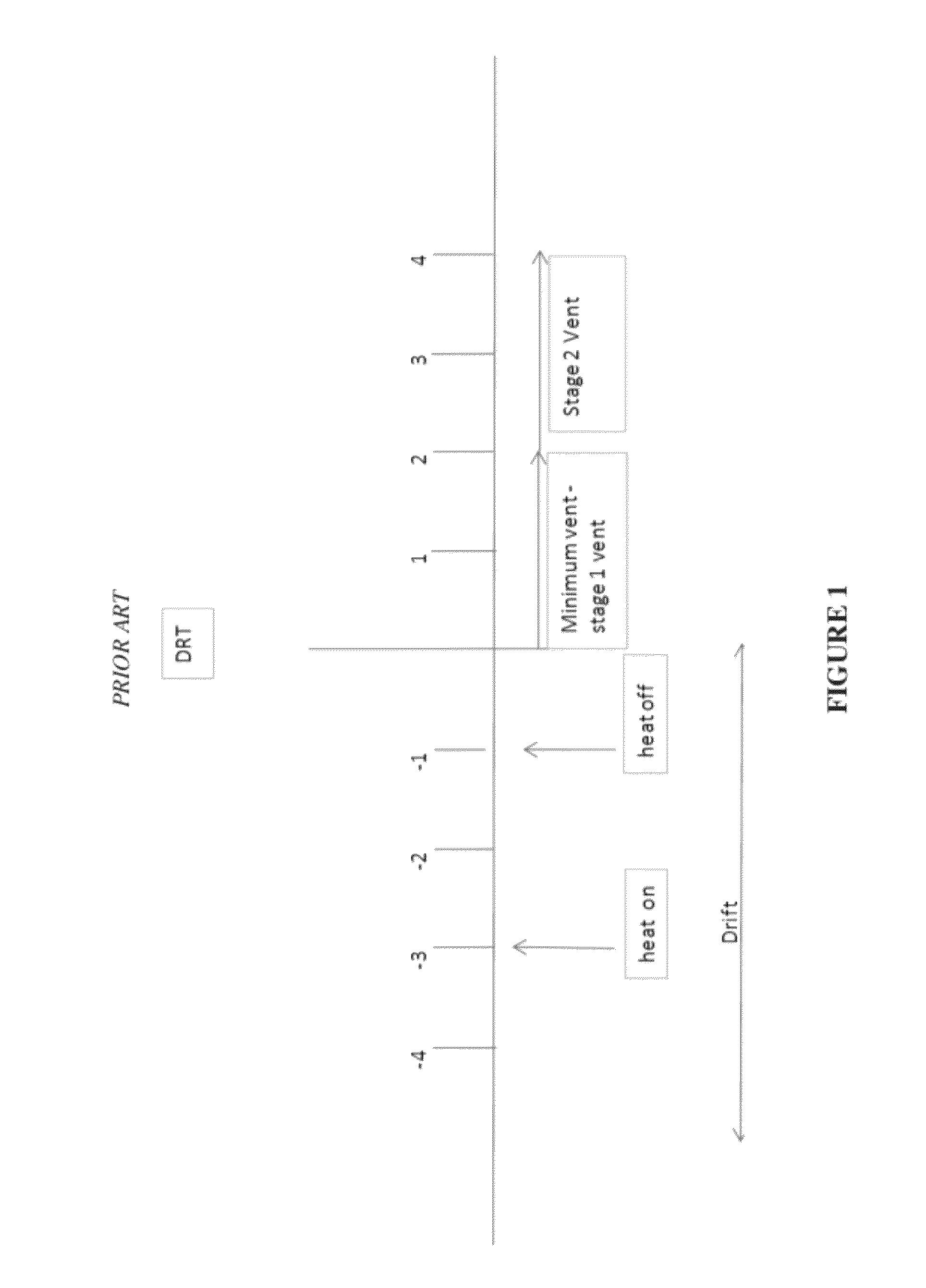Variable rate heating for agricultural purposes
a variable rate heating and agricultural technology, applied in the field of variable rate heating systems, can solve the problems of only heating, not managing ventilation in the smartbox technology
- Summary
- Abstract
- Description
- Claims
- Application Information
AI Technical Summary
Benefits of technology
Problems solved by technology
Method used
Image
Examples
Embodiment Construction
[0062]The present invention is directed to a building temperature management system incorporating the following:[0063]1. A direct-fired forced air variable rate convection heater;[0064]2. A room controller with on / off heat control capability; and[0065]3. The room controller manages ventilation in its normal fashion and the SmartBox manages the heat on a variable basis.[0066]OR[0067]1. A direct-fired forced air variable rate convection heater;[0068]2. A room controller with one or more 0-10 vdc, 4-20 ma, or 0-20 ma heat control outputs when utilized with an appropriate control algorithm. A “Smart Sense” heater (discussed below) can utilize any of these inputs; and[0069]3. The room controller manages ventilation in its normal fashion.
Exemplary Heaters
[0070]There are two basic types of heaters typically utilized in confinement housing: (1) conventional direct-fired forced-air convection heaters and (2) high intensity radiant heaters. Both the forced-air heater and the radiant heater ar...
PUM
 Login to View More
Login to View More Abstract
Description
Claims
Application Information
 Login to View More
Login to View More - R&D
- Intellectual Property
- Life Sciences
- Materials
- Tech Scout
- Unparalleled Data Quality
- Higher Quality Content
- 60% Fewer Hallucinations
Browse by: Latest US Patents, China's latest patents, Technical Efficacy Thesaurus, Application Domain, Technology Topic, Popular Technical Reports.
© 2025 PatSnap. All rights reserved.Legal|Privacy policy|Modern Slavery Act Transparency Statement|Sitemap|About US| Contact US: help@patsnap.com



